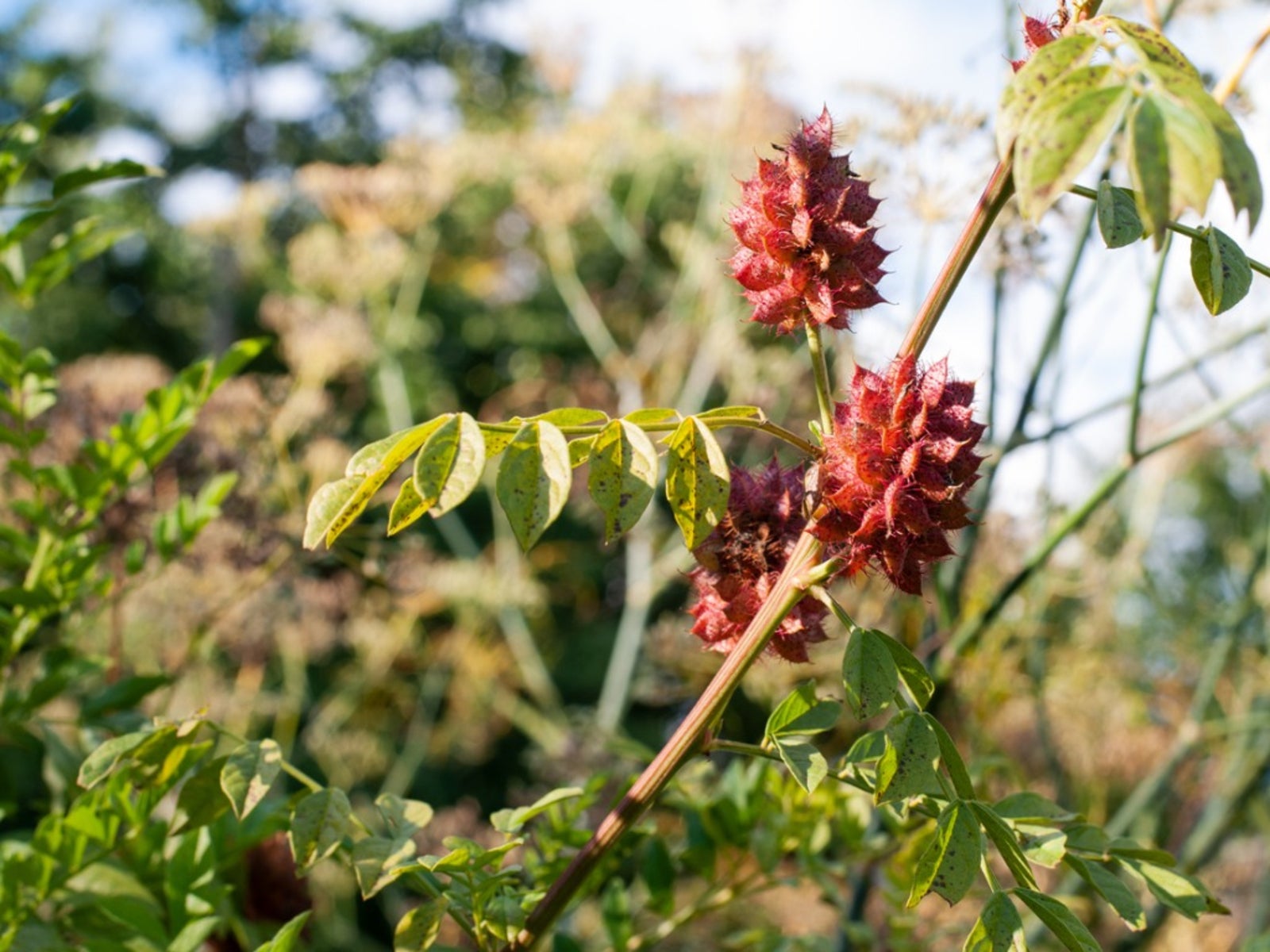What Is A Licorice Plant – Can You Grow Licorice Plants


Most people think of licorice as a flavor. If asked to come up with licorice in its most basic form, you might very well pick those long, ropy black candies. Where does licorice come from though? Believe it or not, licorice is a plant known for its strong and sweet flavor. Keep reading to learn more about growing licorice and licorice plant care.
Licorice Plant Information
What is a licorice plant? Related to peas and beans, licorice (Glycyrrhiza glabra) is a flowering perennial that grows to about 5 feet (1.5 m.) tall. Its scientific name, Glycyrrhiza, comes from the Ancient Greek words glykys, meaning “sweet,” and rhiza, meaning “root.” Just like the name suggests, the part of the plant that contains that distinctive flavor is its extensive root system. Native to Eurasia, it has a long history of use from China to Ancient Egypt to Central Europe both as a sweetener (it is 50 times sweeter than sugar) and as a medicine (even today it is widely used in throat lozenges). To harvest the plants, the roots are dug up and squeezed of their juice, which is boiled down to an extract.
Licorice Plant Care
Can you grow licorice plants? Absolutely! Licorice is very common in the wild in Eurasia and parts of North America, but it can also be cultivated. You can either plant seeds in a greenhouse in the fall, transplanting them outdoors in spring, or (and this is much easier) divide the rhizome of an older plant in the spring. Just make sure that each section of rhizome has a bud attached to it. Licorice plant care is not difficult. The plants like alkaline, sandy, moist soil. Cold hardiness varies greatly from species to species (American licorice is the toughest, hardy down to zone 3). Licorice plants are slow to get established, but once they get going, they can become aggressive. Keep your plant in check by harvesting its rhizomes regularly.
Gardening tips, videos, info and more delivered right to your inbox!
Sign up for the Gardening Know How newsletter today and receive a free copy of our e-book "How to Grow Delicious Tomatoes".

The only child of a horticulturist and an English teacher, Liz Baessler was destined to become a gardening editor. She has been with Gardening Know how since 2015, and a Senior Editor since 2020. She holds a BA in English from Brandeis University and an MA in English from the University of Geneva, Switzerland. After years of gardening in containers and community garden plots, she finally has a backyard of her own, which she is systematically filling with vegetables and flowers.
-
 Looking For Plants To Give You The Soft And Fuzzies? Try These 5 Fuzzy Leaf Plant Options
Looking For Plants To Give You The Soft And Fuzzies? Try These 5 Fuzzy Leaf Plant OptionsLovers of texture, drama, silver foliage and tactile plants will adore these special sensory garden additions. These fuzzy leaf plant options will leave you all aglow
By Susan Albert
-
 Get Ready For A Summer Of Hummers! Grow These Full Sun Hummingbird Plants and Flowers
Get Ready For A Summer Of Hummers! Grow These Full Sun Hummingbird Plants and FlowersIf you’re lucky enough to enjoy a sunny backyard, make sure you are maxing out on your pollinator opportunities and grow these full sun hummingbird plants and flowers
By Tonya Barnett